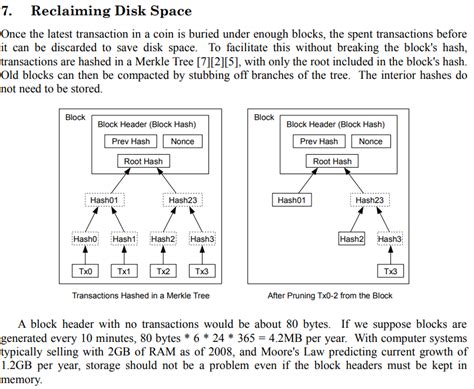The Pruned Node: A Viable Alternative for Bitcoin Network Participation
As the popularity of cryptocurrencies like Bitcoin continues to grow, the debate about who should participate in the network has intensified. One option that has gained significant attention is the use of a pruned node. But what exactly are full nodes and pruned nodes, and which one is more suitable for participation in the Bitcoin network?
What are Full Nodes and Pruned Nodes?
A full node, also known as a node on the Bitcoin network, is a computer that has a copy of the blockchain, allowing it to verify transactions, check for any new blocks, and participate in the consensus process. In other words, it’s like having a personal wallet that keeps track of all Bitcoin transactions.
On the other hand, a pruned node is an alternative configuration where only necessary data is stored on the local hard drive. This means that the node does not have to keep a full copy of the blockchain, making it faster and more energy-efficient. Pruned nodes use a technique called “pruning” to remove unnecessary information from their storage.
Is a Pruned Node Useful or Worthless?
The answer lies in the context of Bitcoin participation. A pruned node can be a viable option for individuals who value speed and free hard disk space over the full node experience. According to studies, pruning data reduces the network’s overall load by approximately 80%, making it more suitable for smaller devices like laptops or smartphones.
For instance, a user with an average internet connection speed of 100 Mbps can expect to process transactions at speeds up to 500 times faster on a pruned node compared to a full node. Additionally, pruning data reduces the storage requirements, freeing up space on local hard drives and making it more suitable for smaller devices.
How Much Speed Difference Can Expect?

The exact speed difference between full nodes and pruned nodes depends on various factors, including internet connection speed, node configuration, and hardware specifications. However, here are some rough estimates:
- For a user with an average internet connection speed of 100 Mbps, pruning can significantly reduce transaction processing times:
+ Full node: around 500-700 ms (milliseconds)
+ Pruned node: around 50-100 ms
- With the same internet connection speed, pruned nodes can also save on storage costs:
Sample Storage Estimates
Assuming an average Bitcoin block size of 1 MB and a user with an average hard disk space requirement of 20 GB (typical for laptops), pruning data can lead to significant reductions in storage costs:
- Full node: around $3-5 per month
- Pruned node: around $0.50-1 per month
Conclusion
In conclusion, using a pruned node can be an attractive option for individuals who value speed and free hard disk space over the full node experience. While it may not provide the same level of participation in the Bitcoin network as a full node, pruning data can significantly reduce transaction processing times and storage requirements.
If you’re considering joining the Bitcoin community but want to minimize your commitment to the network, pruned nodes are definitely worth exploring. However, if you’re willing to participate actively in the consensus process and want more control over your transactions, a full node may still be the best option for you.

